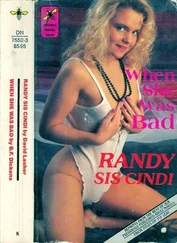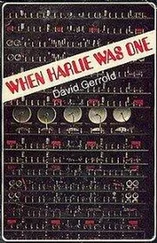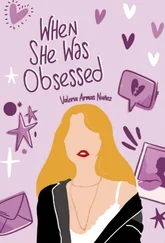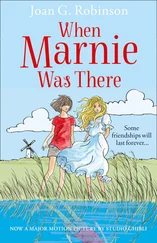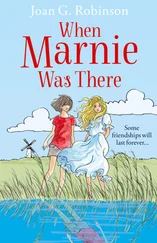1 ...7 8 9 11 12 13 ...23 ‘If you had this floor in your house,’ announces Tennant, suddenly domestic in the midst of Goth-Futurist ambience, ‘and it was taken away, you’d really miss it. Everything would look really drab, because it gives off a lovely light. It’s actually quite warm and contemplative.’ He looks around the floor again, for all the world like a customer in Habitat on the Conran Shop, choosing interior lighting.
Tennant and Lowe are there to promote their new single, with its classically Pet Shop Boys title, ‘I Don’t Know What You Want but I Can’t Give It Anymore’. This single is a mesmerically spooky disco stomper, which has a lyric about paranoia, surveillance and infidelity, but a snare-drum and hi-hat back-beat that sounds as though it was lifted off a track by Barry White and the Love Unlimited Orchestra. In fact, it is one of those potent configurations of opposites that the Pet Shop Boys have made their speciality. In addition to this, they have developed a new image for the video you could call ‘Boot Boy Samurai Chic’.
As a look, this new image just manages to ride that perilously tight back-curve of style that Eddie Izzard identified as connecting ‘fantastically hip’ with ‘totally naff’. What makes it succeed, ultimately, is the fact that the Pet Shop Boys have pushed it to the very limit: scary gold-haired wigs that show the dark roots of dyed hair, heavy black eyebrows of the kind last seen on Siousxie Sioux in about 1981, spider-thin dark glasses that lend an air of complete blankness to the features, and striped culottes that hang like ankle-length skirts. Gothic interiors, men in skirts and synthesizers – it has to be New Romantic.
‘I do think that the video’s quite New Romantic,’ says Neil, ‘but New Romanticism worked for such a short period of time, didn’t it? And needless to say David Bowie had the best moment in it by leaping in about two hours after it all started with the video for “Ashes to Ashes”. That really is the ultimate New Romantic video, although there’s probably some good ones by Steve Strange and Visage – “Fade to Grey” perhaps?
‘I remember when I used to live in a flat in the Kings Road, just above a Chinese restaurant, and I happened to open the door one day just as Steve Strange walked past. He was wearing “Look Number Three”, which was when he had a beard and sat on cushions. It was his “Cushions Period”, but I always remember it as quite exciting.’
‘There’s not enough of all that, these days, is there?’ adds Chris Lowe, as though remarking on the demise of corner shops. ‘The Kings Road used to be fantastic.’
‘If I had the nerve,’ Neil confides, ‘I’d walk up and down the Kings Road dressed like we are in our video. Secretly, I’d quite like to do that. But it takes too long to put the wig on …’
‘But that was the whole point!’ exclaims Chris. ‘The whole point of New Romanticism was that it took such a long time to get ready. That was what you did – get ready.’
‘I have to say that I like the bit in the video with the whole ritual of putting on the costumes. The costumes are a distancing technique – a way of saying that we’re nothing to do with anything else that’s happening in pop,’ says Neil. ‘Pop music, these days, is either cheesily sincere – as in your boy bands – or it’s effectively natural-looking, and we wanted to do something with a level of artifice in it. I always liked pop that has a sense of wonder about it. I mean, would you rather see David Bowie on roller skates – like he was in his “Day In, Day Out” video – or would you rather see David Bowie dressed as a clown, walking along the beach at Hastings with a bunch of New Romantics? I imagine you’d rather see him dressed as a clown in Hastings – I know I would.
Also, the Pet Shop Boys have always been obsessed with not being real, because we think that’s more interesting. I have always thought that the idea, for a pop star, is to not be able to believe that they’re real. Which is why I think it was brilliant that Elvis never performed in Britain. Actually, to their credit, the pop gossip columnist of The Sun suggested that all the interviewers should be dressed like we are in the video.’
‘But it can also look grotesque,’ Chris points out.
‘No. It really wasn’t designed for daily wear,’ agrees Neil. ‘It was designed like our “Pointy Hats” look a few years ago, to be seen through an electronic medium. That way you can smooth things out. We did the “Pointy Hats” in real life, just once, when we launched MTV in Russia. When we came out to do the press conference we discovered that the ceiling of the room was too low for the hats, and then when I sat down the collar of my jacket rode up, so I had to kind of bend forward. An English audience would have found this hilarious, and we’d all have had a good laugh. But the Russians just sat there and stared at us, and then asked all the usual questions as though nothing was odd. You’ve got to have a nerve to do this kind of thing, you know. But when you look at our “Pointy Hats” video, it’s a classic video. It’s an attempt to move away from all the supposed naturalism in pop …’
With their new image, record and forthcoming tour, the Pet Shop Boys are presenting, as usual, an entire theatrical package. This time, they have pulled off the considerable coup of collaborating with the visionary architect, Zaha Hadid, some of whose buildings have been considered too radical to be constructed. In the light of this latest collaboration, one can see how the Pet Shop Boys – Lowe is a trained architect himself – are continuing their fascination with presenting artificial environments in which to perform their songs.
‘Actually, the idea came about because Janet Street Porter had been walking with Zaha Hadid for her television programme,’ says Neil. ‘And she said, “Why don’t you get Zaha Hadid to design your new musical?” and we said, “Because she’s an architect and it’s a completely different discipline to designing for the theatre.” But then we were in New York and I was flicking through a book of Zaha’s designs in the Rizzoli bookshop, and I suddenly saw all of her architectural models as stage sets – wonderful shapes to walk across while holding a microphone, wearing a ludicrous costume and having a wind-machine on you maybe.
‘So we approached her, and I have to say that she and her operation have been inspiring to work with. They take all the practicalities of a rock show on board, and they are the only people we have ever worked with who take the budget seriously. They are working on a modular set which can evolve during the show and be adapted to different sizes of venue. Which means that the backing singers are going to be doing some heavy lifting, only they don’t know that yet …’
So what does all this new look mean? Or does it mean anything? To judge from the exterior shots of the video, and the extreme styling of their new image, they are positioning themselves in a vision of the future in which the architectural brutalism of the Seventies has become as weathered as the Victorian neo-Gothicism of Sir George Gilbert Scott’s Saint Pancras Hotel. It is, perhaps, the idea of the future itself appearing antique and old-fashioned, with every adult and child dressed, as revealed at the end of the video, in the extraordinary Samurai chic which we had assumed was a sub-cult gang costume – like the Droogs in A Clockwork Orange – rather than the mark of complete social conformity.
‘There is a comment about conformity,’ says Neil. ‘But I think that if our previous shows were paintings, then they would have been figurative. Whereas this one is definitely abstract. Unlike our other shows, this doesn’t have a narrative, however loose. I think that it is possible for pop music to get over-intellectualized, but on the other hand it probably isn’t intellectualized enough. In the late Seventies and early Eighties pop was definitely intellectualized, and interestingly enough there was a lot of good music around at the same time. These days, you’d get embarrassed to start talking about art or writing in pop because people might think you’re being pretentious, which is a really sad pay-off of the whole laddish thing in the Nineties.’
Читать дальше



